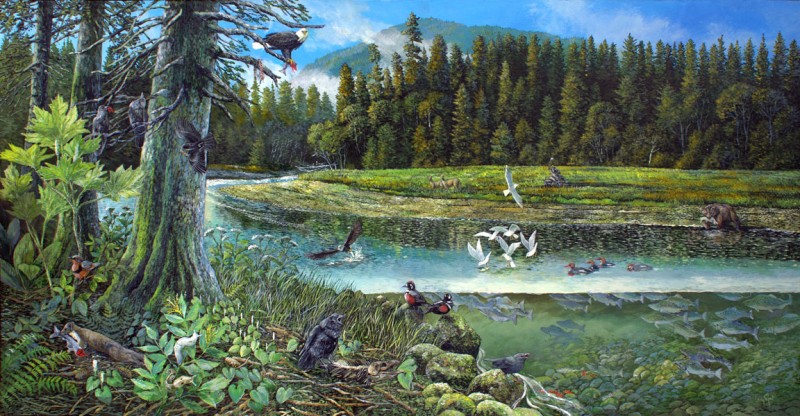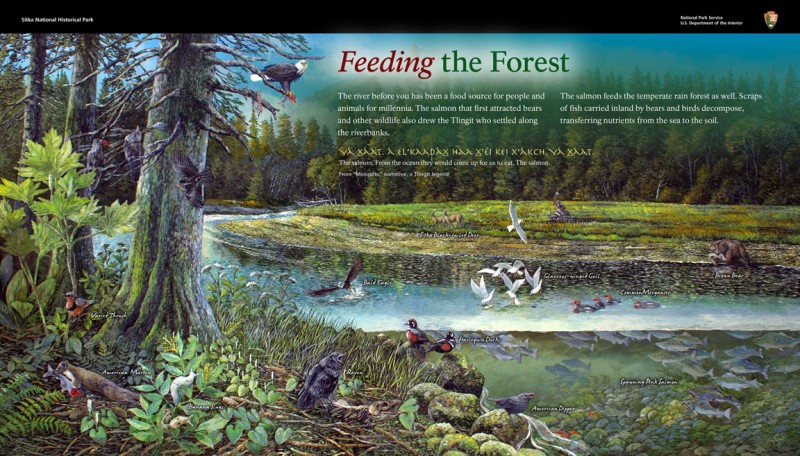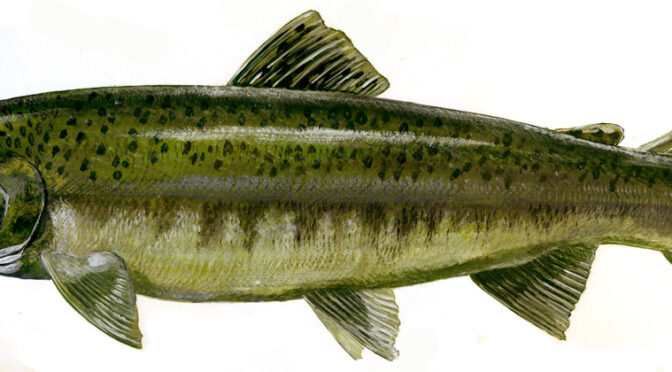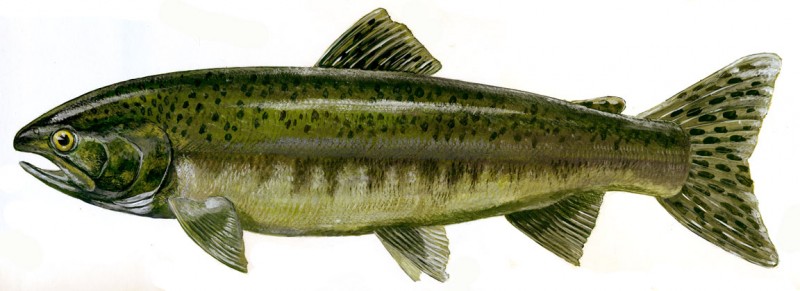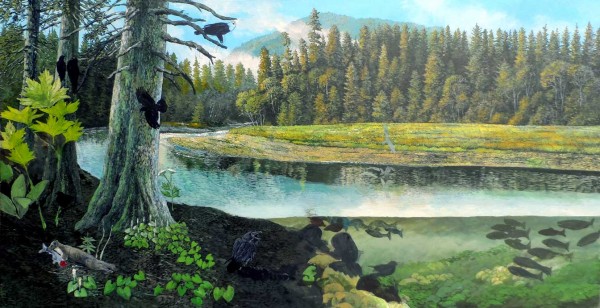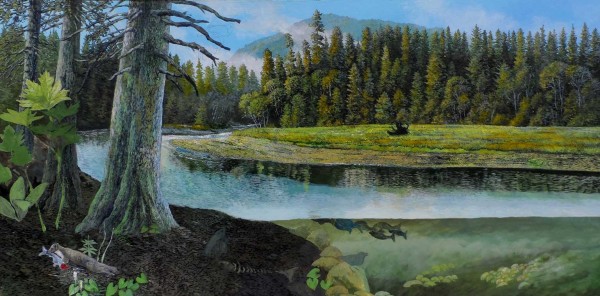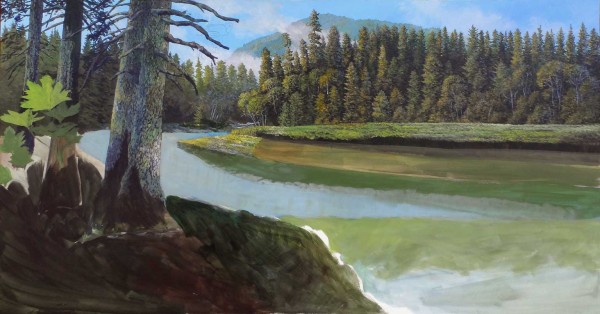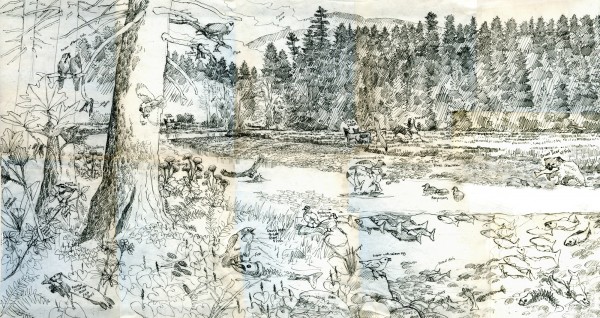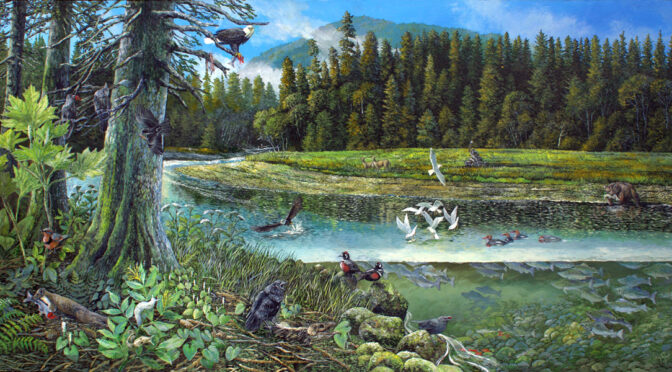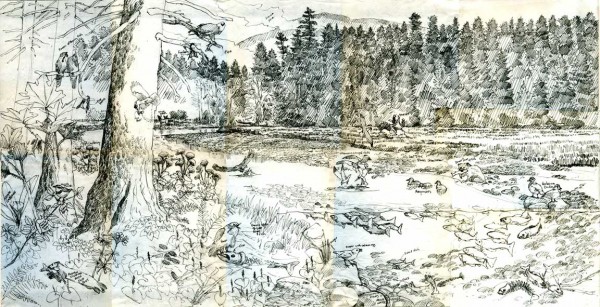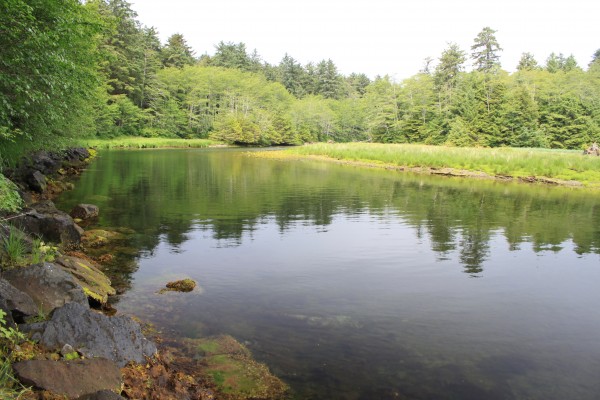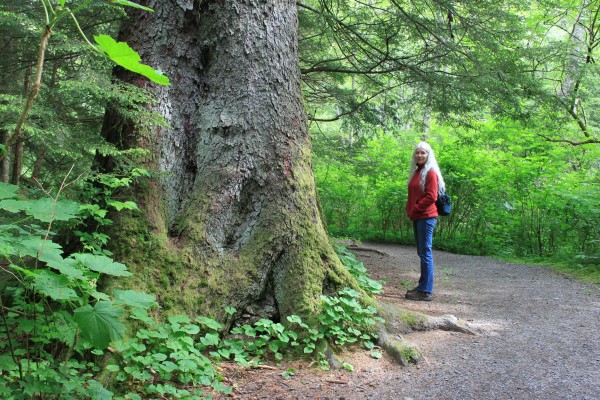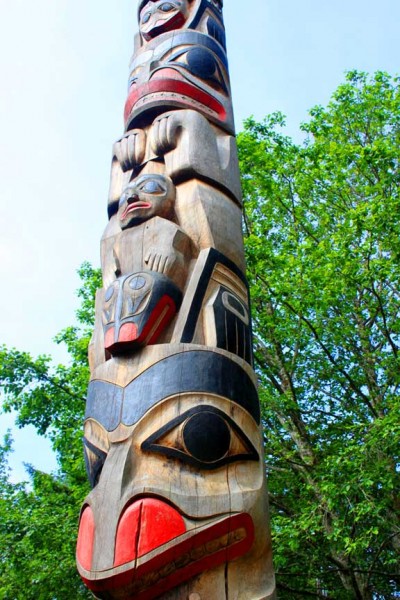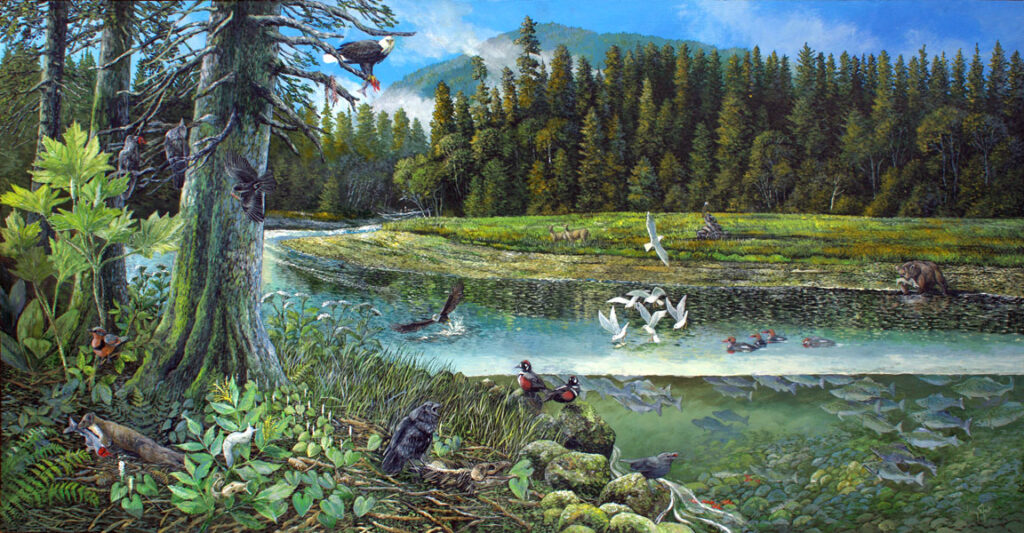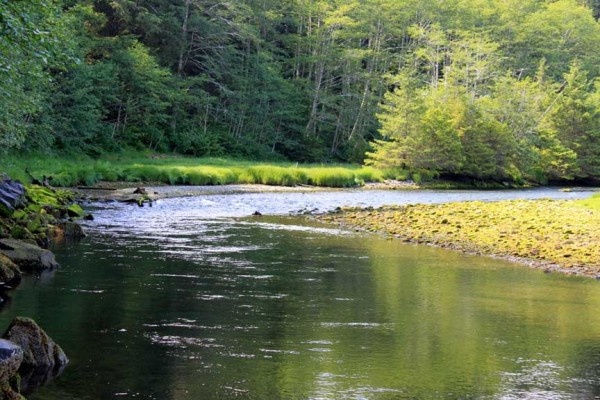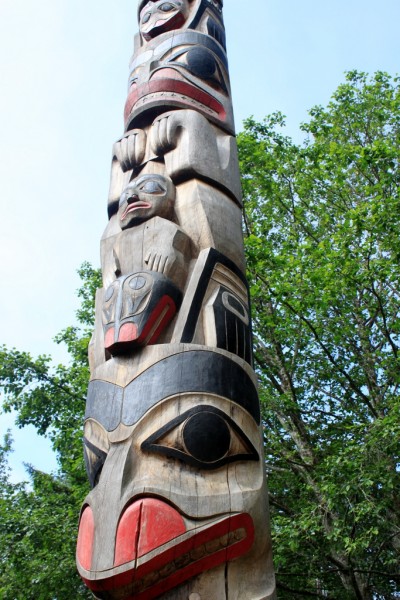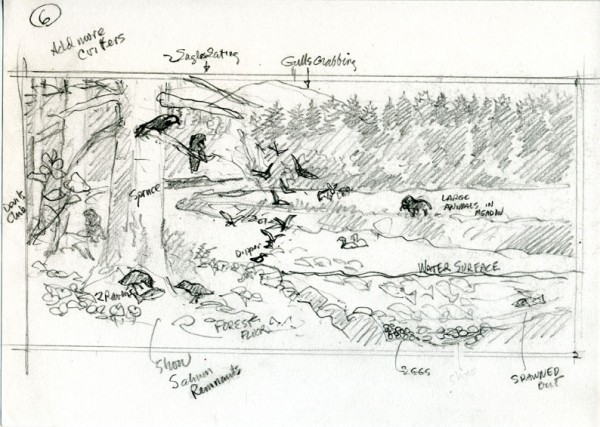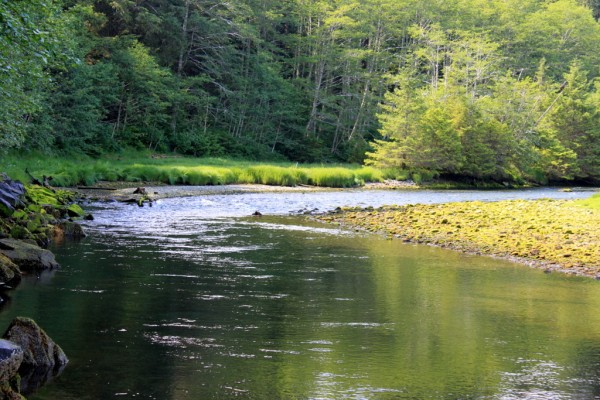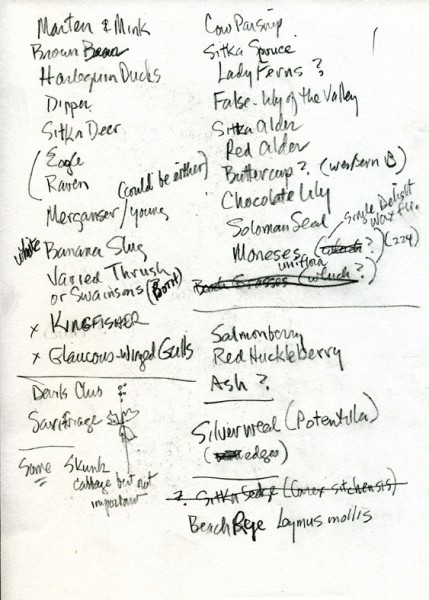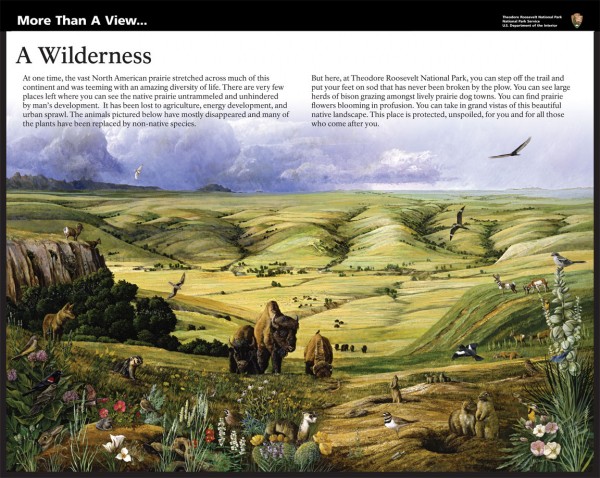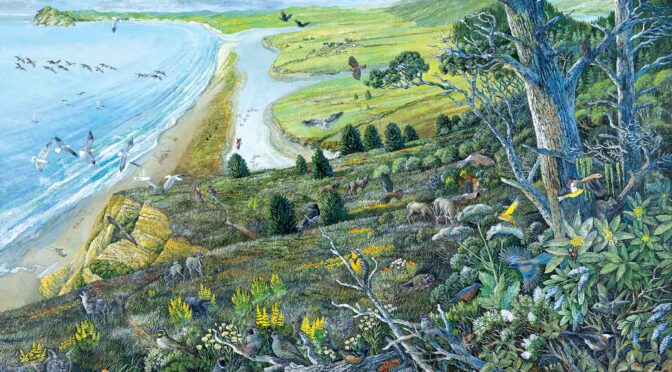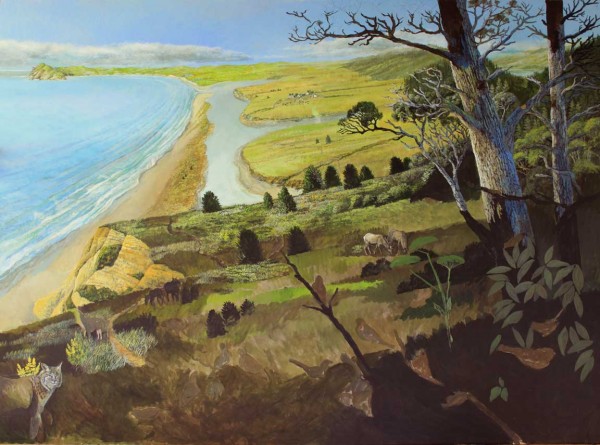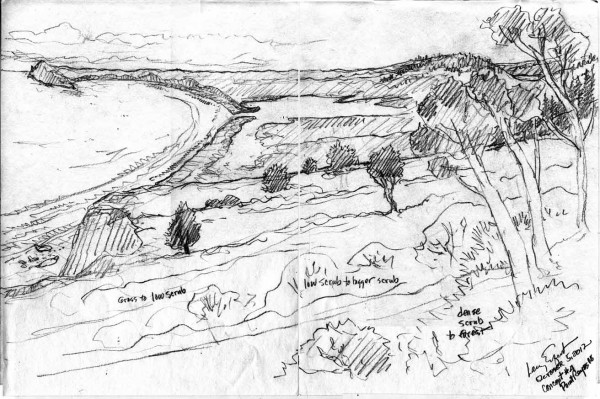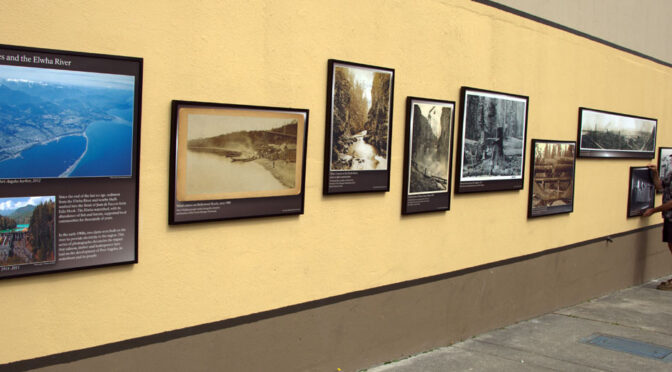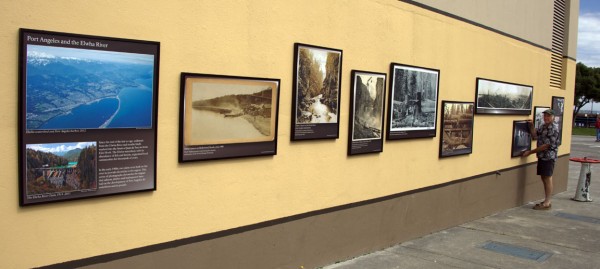Last week I finished up my painting for Sitka National Historical Park in Alaska. I think it hits the mark pretty well. I was tasked with showing the relationships between spawning pink salmon and the forest around Indian River, right in the town of Sitka. The park actually surrounds this Estuary. Essentially it’s the story of how the returning fish feed the local critters and even the trees themselves. See the American Marten running deeper into the forest with a fish? The dipper with an egg in its mouth, a brown bear catching the salmon, or eagles and ravens doing the same? I thought it pretty great that this coincided with our local “pink” salmon stream, the Dungeness River that is having a huge spawning run right now too – over 100,000 fish and still counting.

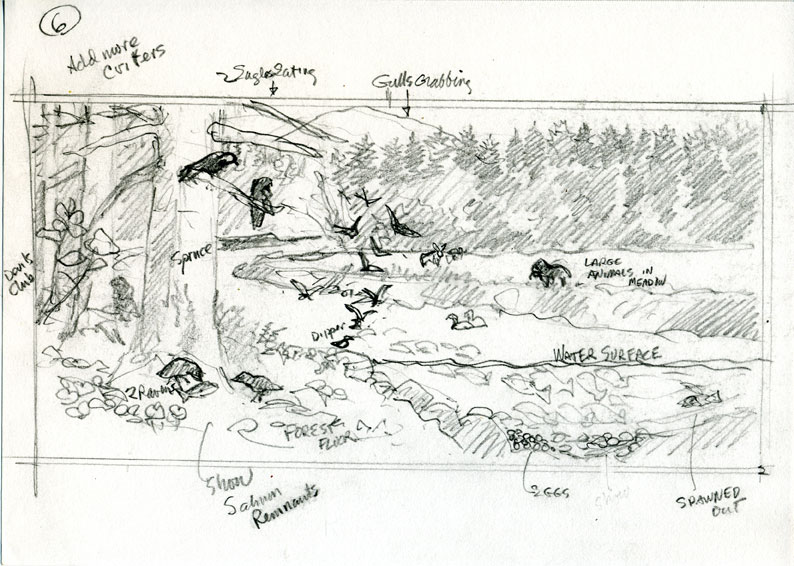
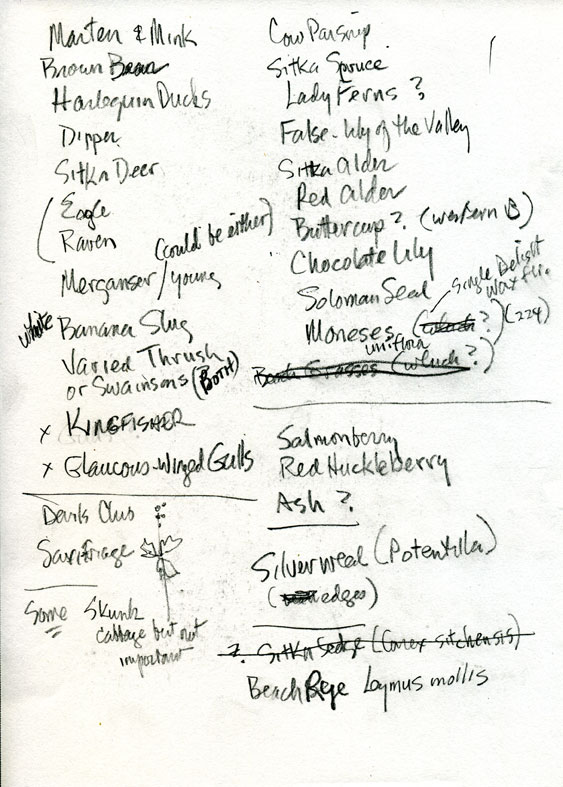
And here’s the finished installation (or at least a design mockup from Harpers Ferry Center in West Virginia). It’s not approved yet, but well on the way. I left the web version large, so click the image so you can see the text and other details. This will eventually be installed along the trail in the exact location as what the painting shows. At 42″ wide, it will be a pretty large panel, almost as big as the original painting.
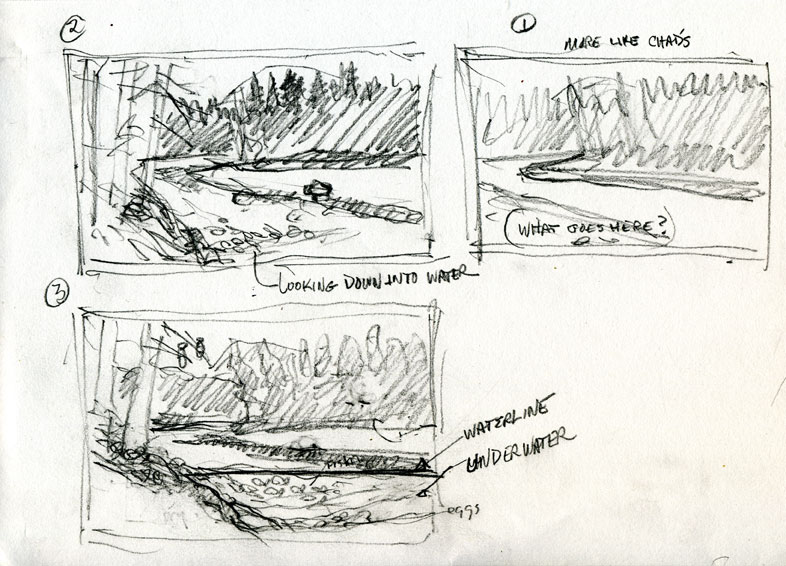
This installation is a great example of why I just love my job. This will be there for many years, teaching visitors about this special place by using art in an outdoor location – right at the point of contact with nature itself. My mom taught people about nature, but she did it with her books, photography and outdoor classes. I’m just doing the same thing in another way, with paintings – and I hope it never ends.
Thanks for reading this week.
Larry Eifert
Here’s the blog on the web. And here’s my Facebook fan page. I post lots of other stuff there.
Click here to go to our main website – with jigsaw puzzles, prints, interpretive portfolios and lots of other stuff.
Nancy’s web portfolio of beautiful photographs
And Click here to go to Virginia Eifert’s website. Her books are now becoming available as Amazon Kindle books.

